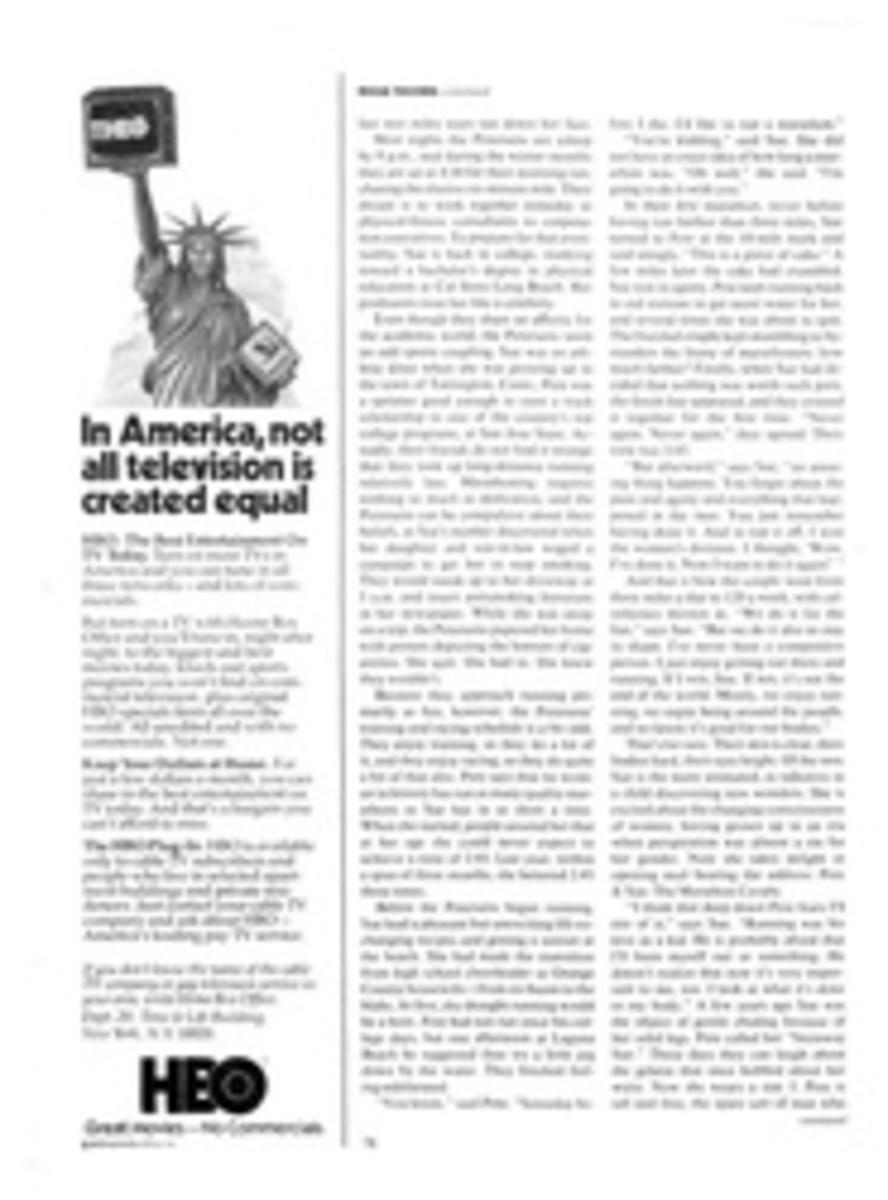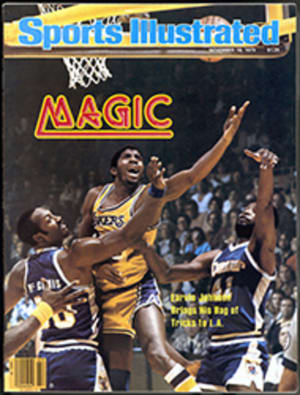
IT'S FISHING SEASON FOR NOLAN RYAN
The New York Yankees may have been a dismal fourth in the American League East this year, but they are clear-cut champions of the Hot Stove League. With his usual flair for the dramatic, New York owner George Steinbrenner in the past three weeks has resigned two Yankees who looked as if they might go elsewhere, canned his manager and replaced him with a college coach, and named as his general manager a minor league skipper. He also has pulled off two significant trades and grabbed two of the choicest players in the free-agent reentry draft. And now, for an encore, Steinbrenner would like to land Nolan Ryan, the most glamorous free agent of them all.
While the Yankees were fishing for Ryan last week—in the same boat with Houston, Texas and Milwaukee—Ryan was doing some angling himself. The 32-year-old former California Angel pitcher settled down by a pond on his 600-acre spread, a 3½-hour drive from his home in Alvin, Texas and contemplated rumors that next week he might reel in a record free-agent contract worth $1 million a year. "I don't think there is a million-dollar ballplayer," Ryan said, "but if somebody's willing to pay...."
Steinbrenner certainly seems willing. "Nolan's one of the most desirable quantities in baseball," Steinbrenner says. "He's a strikeout king, and in these days when you have to fight soccer in the summer and football in September, you have to get the fans to the park somehow. And they come to see players hit home runs and strike people out." Steinbrenner landed a crowd-pleasing home-run hitter in the first reentry draft three years ago—Reggie Jackson—to whom Ryan would seem to be the perfect complement. Even Ryan's agent, Dick Moss, believes New York would be the ideal choice: "I said to Nolan, if I had your talent and your charisma and could create the kind of excitement you can, I would want to do my thing in New York, because I think it's the greatest baseball city in the country.' "
Although Steinbrenner himself could not have expressed it better, New York does not satisfy Ryan's yen to play for a team based near his home. Closest to Alvin is Houston, 26 miles away, which may be why, even before the draft took place, Ryan and his wife lunched with Astro owner John McMullen, who may have even more money than Steinbrenner and is willing to spend it. Also relatively nearby are the Rangers, and Ruth Ryan, a Lone Star native, prefers either of the two Texas teams to the Yankees. The fourth possibility is Milwaukee, although the Brewers seem least likely to generate a $1 million-a-year offer. Indeed, that seems an outrageous sum for any pitcher but when Ryan is healthy—which he is often not—he can be untouchable; witness his four career no-hitters and 2,909 strikeouts.
Money, even if it should go as high as a million, would certainly not be a problem for the Yankees, who spend it as easily as they make it. Last week's signings of First Baseman-Designated Hitter Bob Watson and Pitcher Rudy May brought to eight the number of free agents who have made their reentry through the Port of New York—at a cost of nearly $15 million. "I didn't create the free-agent system," Steinbrenner says, "but if it's there, I said I was going to use it."
No one appreciates this generosity more than the players. "I was surprised and overwhelmed," Watson said of Steinbrenner's big-money blitz. Watson, who batted .303 with Houston and Boston last season, received a four-year contract worth approximately $1.8 million, while May, 10-3 with Montreal, picked up $1 million for three years.
As Steinbrenner describes it, the money he's handing over to Watson and May isn't even his. "The fans paid for them, I didn't," he says. "More than two and a half million people came out this year to support a fourth-place club. We're going to give them the kind of ballclub they deserve."
Badly in need of a receiver to replace Thurman Munson and a centerfielder to take over for Mickey Rivers, who was traded last season, Steinbrenner had begun the Yankee overhaul a week before by trading for Catcher Rick Cerone and Pitcher Tom Underwood of Toronto and Centerfielder Ruppert Jones of Seattle. The only important loss was First Baseman Chris Chambliss, who went to Toronto, having become expendable when Steinbrenner re-signed Jim Spencer, along with Shortstop Bucky Dent, a few days before. "Until we made these deals, our club had some holes and could be taken advantage of," Steinbrenner said. "Now we feel very good about our team."
In addition to changing the look of his lineup, Steinbrenner also reshaped New York on the management side. The day the trades were announced, the Yankees also introduced Gene Michael as the new general manager, succeeding Cedric Tallis, and Dick Howser as the new manager, succeeding Billy Martin. Both Michael and Howser are former Yankee players and coaches, although last year Michael was the pennant-winning field boss in Columbus and Howser guided the team at Florida State.
While orchestrating all of these moves with his blend of cajolery, bluff and charm, Steinbrenner was also keeping watch over his shipbuilding business. "These have been the toughest eight or nine days I've ever had," he said.
But Steinbrenner's recent spate of activity is precisely what sets him apart from baseball's other executives, particularly the likes of Boston owner and General Manager Haywood Sullivan, who allowed the hard-hitting Watson to skip town. "George is very forceful," says Tom Reich, who negotiated Watson's move from the Red Sox. "He knows what he wants and he goes full bore in trying to accomplish it. He applies his executive and entrepreneurial skills much more directly and decisively than the vast majority of owners."
With Steinbrenner dealing, New York's activity in the free-agent reentry process has been significantly different from that of Detroit, which has selected no one the last two years, and Cincinnati, which has never signed anyone from the draft. They represent the old-school approach that says baseball teams should be improved solely through trades and minor league development.
The traditional criticisms of the reentry draft have been that it would hurt the competitive balance of baseball and that it would send some teams to economic ruin. Marvin Miller, executive director of the Players Association, argues however that "Not a single one of these fears or worries has come true. It's just the reverse." Miller points out that although the average player salary has increased from $50,000 in 1976 to approximately $121,000 last year, owner revenues also have gone up tremendously. This resulted from an increase in average club attendance from 1.3 million fans to 1.7 million over the same period. The larger crowds poured in despite ticket-price rises that increased the average from $3.44 to $4.12. Nevertheless, Ray Grebey, director of the owners' Player Relations Committee, counters, "While baseball teams as a group are doing well, there are some very sick clubs." But Grebey does not name the teams or offer any supporting data.
As for competitive balance, a comparison of the 1976 and 1979 final standings shows a marked decrease in the total number of games separating not only the first-and second-place teams in three of the divisions but also the first-and sixth-place teams in all four. Furthermore, six teams finished in exactly the same places in the standings.
This is not to say that the reentry draft has not had a profound effect on some teams. Oakland lost 31½ games in the standings after seeing such players as Don Baylor, Joe Rudi, Rollie Fingers and Sal Bando move on. Meanwhile, the two most improved teams over the 1976-79 period, Montreal and Milwaukee, were very active in the marketplace, even though their successes this year can be attributed only partly to the work of free agents.
This year's group of 44 free agents tests the acumen of even the most astute front-office tactician. Watson, the best hitter, is already gone. Among those remaining, former Expo Tony Perez will be 38 next season, and ex-Red Joe Morgan, 36, is coming off two mediocre seasons. Morgan, a two-time MVP, was drafted by only four teams and will probably wind up in Los Angeles or San Diego. Among the pitchers, Ryan has more glamour than consistency, Bruce Kison, late of the Pirates, is rumored to have arm trouble and Reliever Al Hrabosky, formerly of the Royals, may have misplaced his out pitch. Reliever Don Stanhouse lost a lot of prestige—and possibly money—with his sorry postseason performance for Baltimore. Former Twin Dave Goltz, a 20-game winner in 1977, gained stature when he became the first player ever selected by the maximum number of teams allowed—13—in the first round. "I looked for six to eight teams to draft me," Goltz says, "but when I laid my cards on the table they all came up aces."
Now he, Ryan and the Yankees all seem to have the deck stacked in their favor.
PHOTO
Doing a little fishing himself on his Texas ranch, Ryan is said to be angling toward the Astros.
PHOTO
Fourth on the field, Steinbrenner leads the Hot Stove League.

